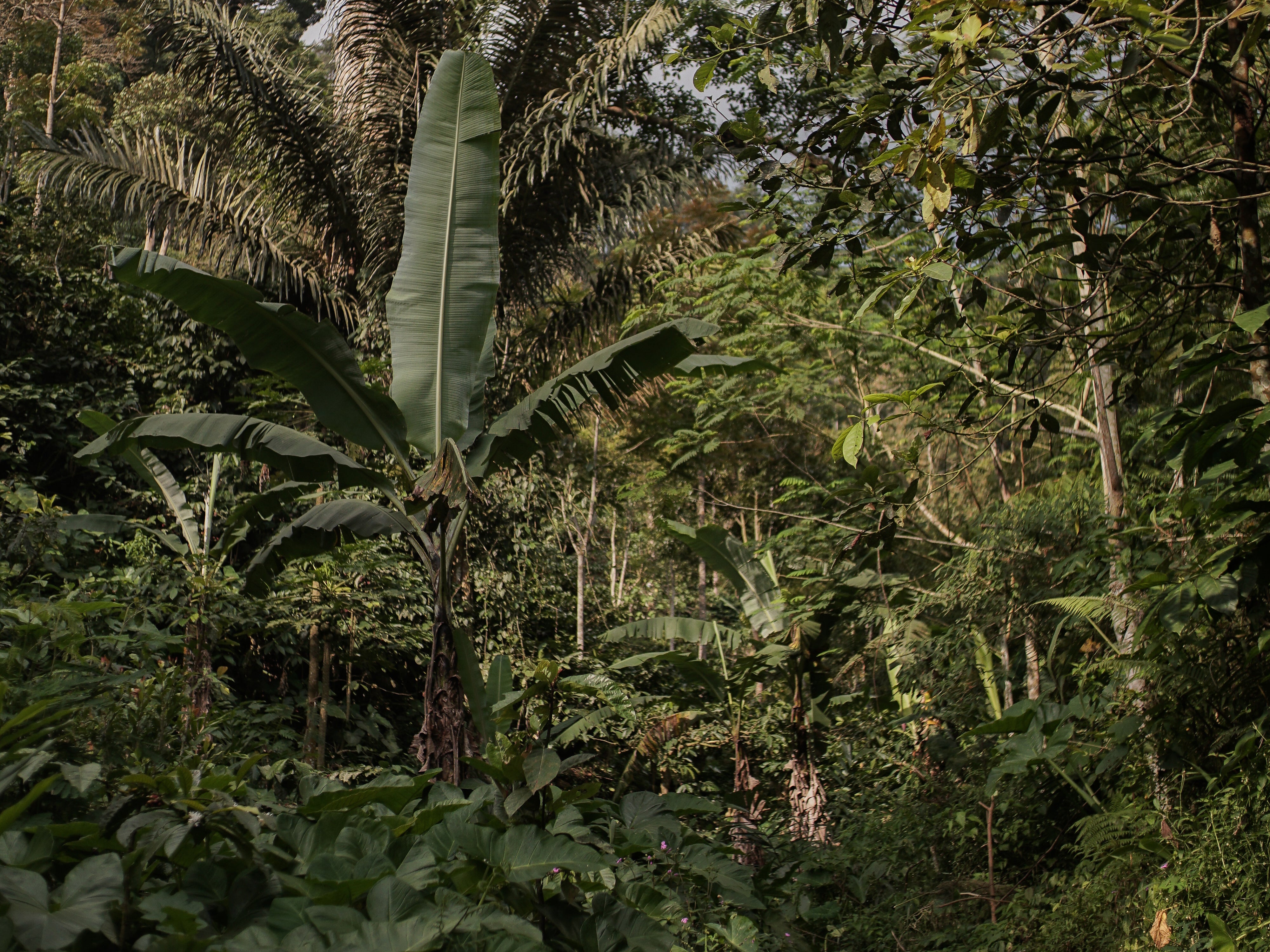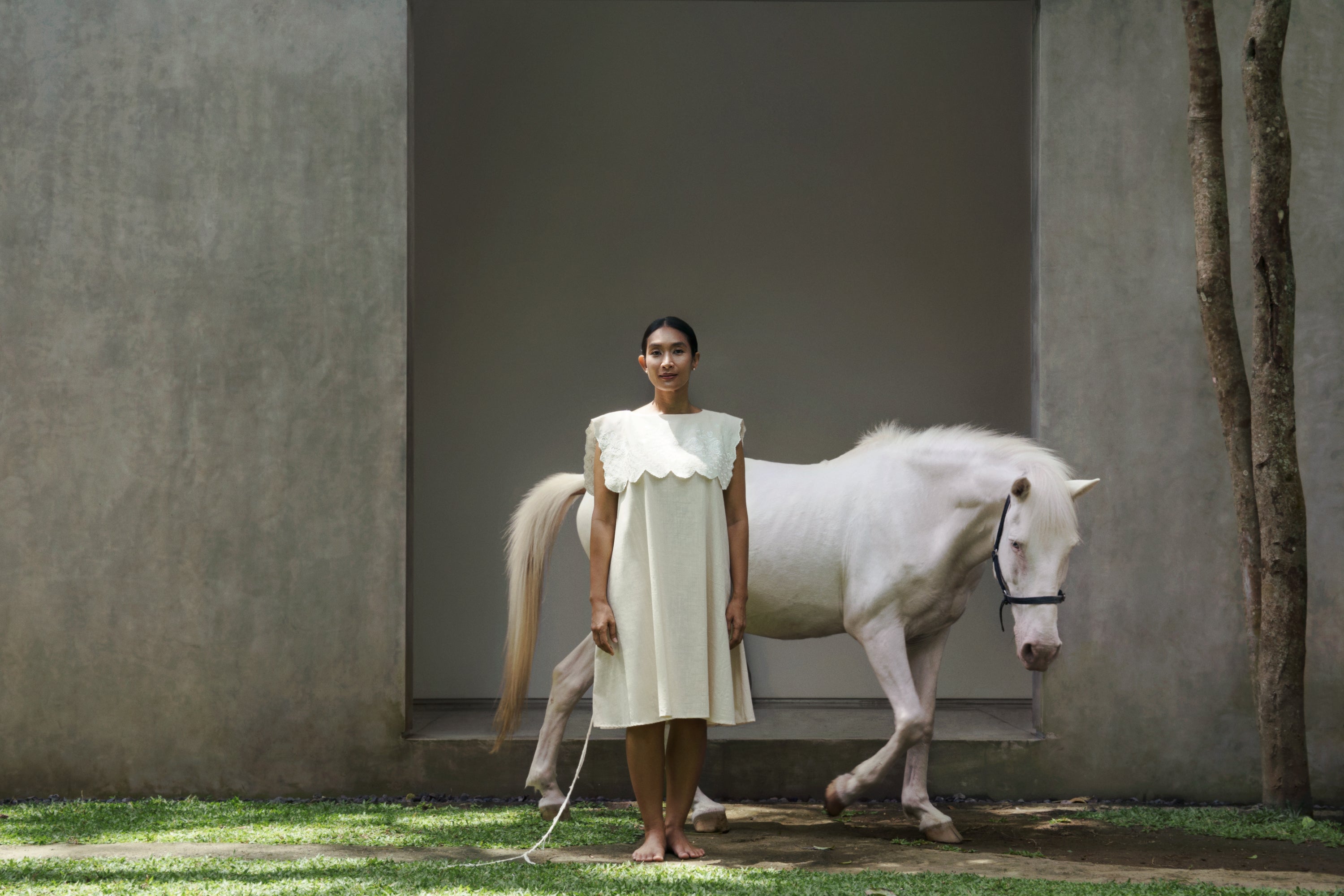
SweetIndigo™ is our signature plant dye that colors your favorite SukkhaCitta blue hues. From the lightest blue all the way to the deepest black, learn more about our climate resilient dye.
Its journey starts from the soil. Where our farming communities plant the leaves under lush coffee trees in sacred forests around their village. Grown over 4 months with sun and rain, the leaves are then fermented in mountain water before our Ibus can use it to dye.
The making of each SweetIndigo™ piece is as much an art as it is a science. For years, we researched ways to perfect the recipes. Using sugar as a reductor that ensure the blue dyes are absorbed with natural stability.
Requiring both technical mastery and intuition developed after decades of experience of a master dyer. Its hue follows the seasons, being darker when it’s sunny and lighter when it’s raining. Making each truly one of its kind.

Your SukkhaCitta Black Indigo shirt is dyed with 20kgs of Indigo leaves. Dyed 30x in our sugar SweetIndigo™ vat to ensure no chemicals touch your skin. Better for you, our Ibus, and our only home.
Farm to closet
The journey of your most meaningful piece begins in the soil. Using the seeds we saved from the previous harvest, our Ibus and their husbands grow little indigo seedlings in a nursery next to Rumah SukkhaCitta. Once they're big enough, we move them to the many existing space in the surrounding forests.



Before the leaves can be used to dye, our Ibus ferment them in mountain Spring water undergoes a long fermentation process in large concrete vats. They bubble up, appearing to breathe, and this lifelike reaction is also an assuring indication of its quality.
On a molecular level, this fermentation process is crucial. It enables the water insoluble indigo dye molecules to attach and bond to cloth fibers, which makes sure the dye stays on the clothes. The depth and fastness of the colour are determined by the layers of fermented indigo dye molecules built up in the vat.
The process is a labor of love for Mother Earth, following the cycles of Nature.
While we let the fermentation happen, let me take you to the forests nearby our village. Under a large palm tree, Ibu Dani waits for her husband to climb and collect the sap that built up overnight.
Natural Dye, Natural Process
Not all natural dye are equal. To use the plant to dye, often chemical mordants are used in the process of turning the plant into dye. You can imagine the blue dye particles are now floating in the water after the fermentation process. But that's just it, it's sleeping. To actually use it to dye, you have to wake it up.
Chemically, it's a process called reduction, where oxygen is temporarily taken from the vat to allow the indicants to enter the fabric. Without this crucial reduction process, the blue dyes remains asleep and unable to stick to the fabric.
This is the key behind our SweetIndigo™ process. Using sugar that acts as the natural reductor ensures no chemicals are left behind. This the vat can be used for years, minimizing the amount of water usage while ensuring no dangerous leftovers are emitted from our dyeing process.
Better for you, our Ibus, and Mother Earth. A win for all.



Why this matters
Today, almost all our clothes are dyed with chemicals. Causing social and environmental issues that are hidden behind the colors we choose to wear.
Synthetic dyes are responsible for 20% of clean water pollution. In fact, 72 toxic chemicals in our water come solely from textile dyeing - of which 30 can never be removed. These chemicals keep reacting and forever changing in our rivers.
The good news? There is a better way. And it involves looking back, to the way our ancestors have lived in harmony with Nature over generations. Read more on why we only dye with plants.






